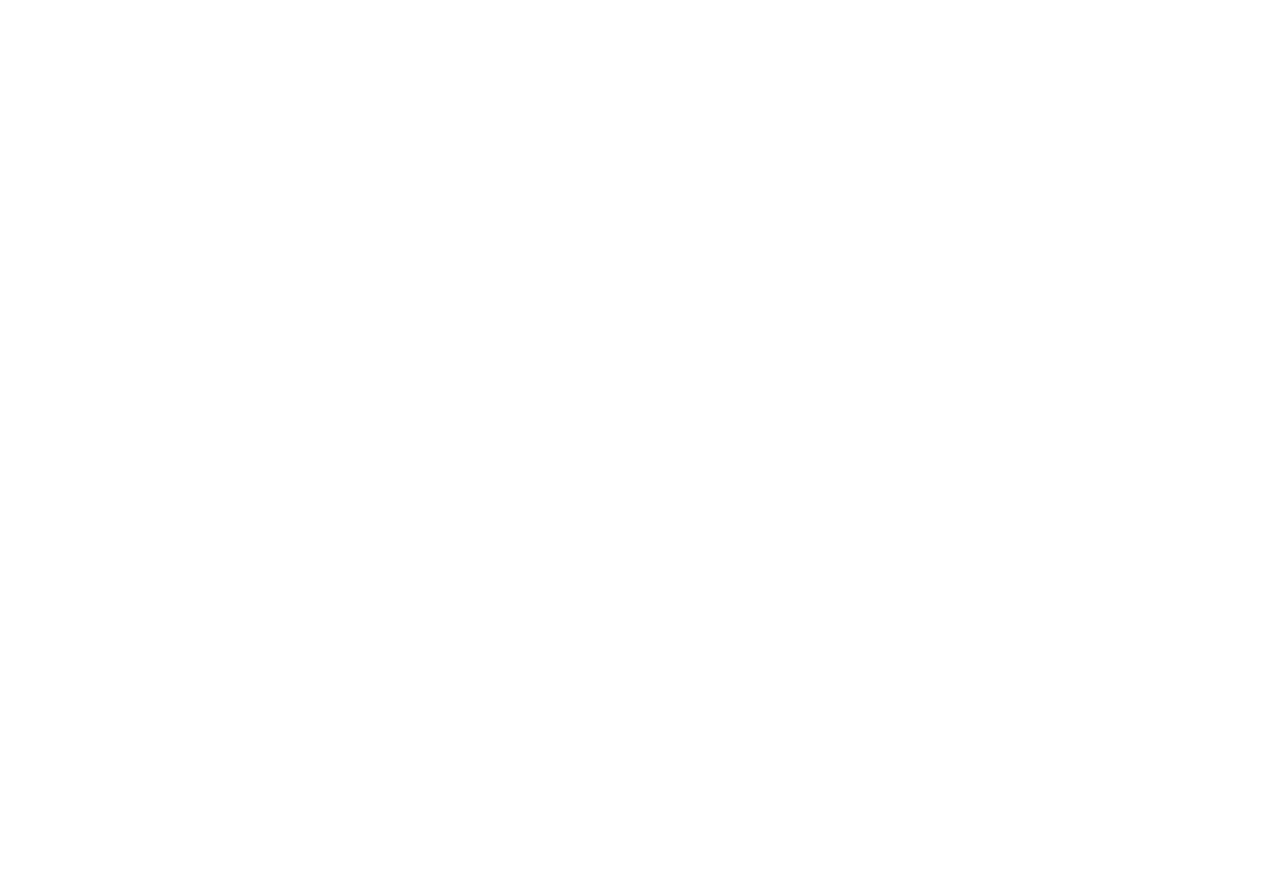
LECTURE 8
Recursive functions and algorithms
Simple examples
Programs: c3_1.c ......, c3_6.c
Tomasz Zieliński
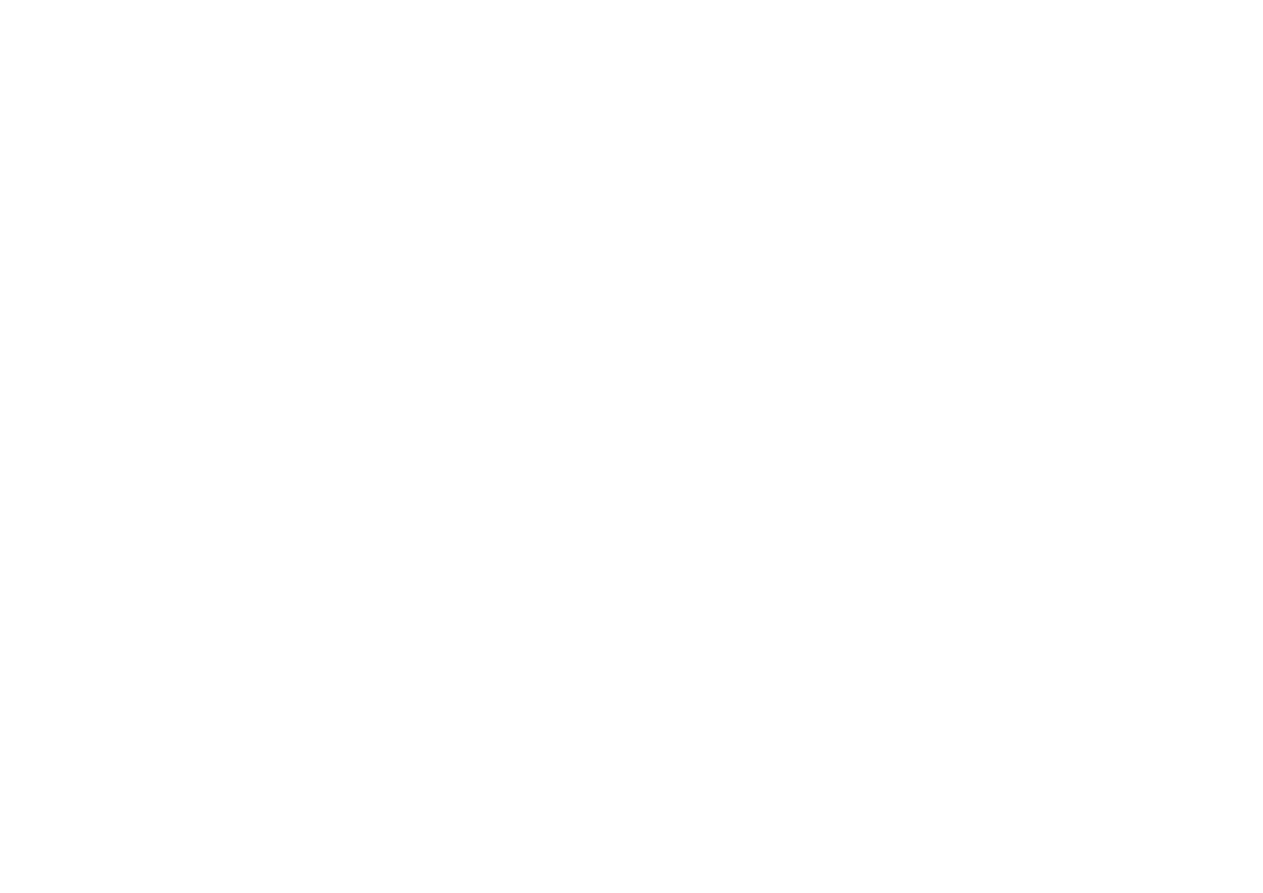
RECURSIVE METHODS (1) -
program c3_1
======================================================================================================
Recursive function
is a function that inside is calling itself.
======================================================================================================
/* Example 3.1 – print in
reverse order
characters taken from the keyboard */
#include <stdio.h>
void RevOrder( void );
void main()
{
printf("\nWrite in line. Finish with <Enter>. \n\n");
RevOrder();
}
==========================
void RevOrder( void )
{
char c;
// read a character from the keyboard and store its
if ( (c=getchar() ) != '\n' )
// ASCII code into ”c”; if it is not end-of-line, then:
{
//
RevOrder();
// <== !!! call again the function ReverseOrder()
printf( "%c", c);
// display character ”c” on the screen
}
}
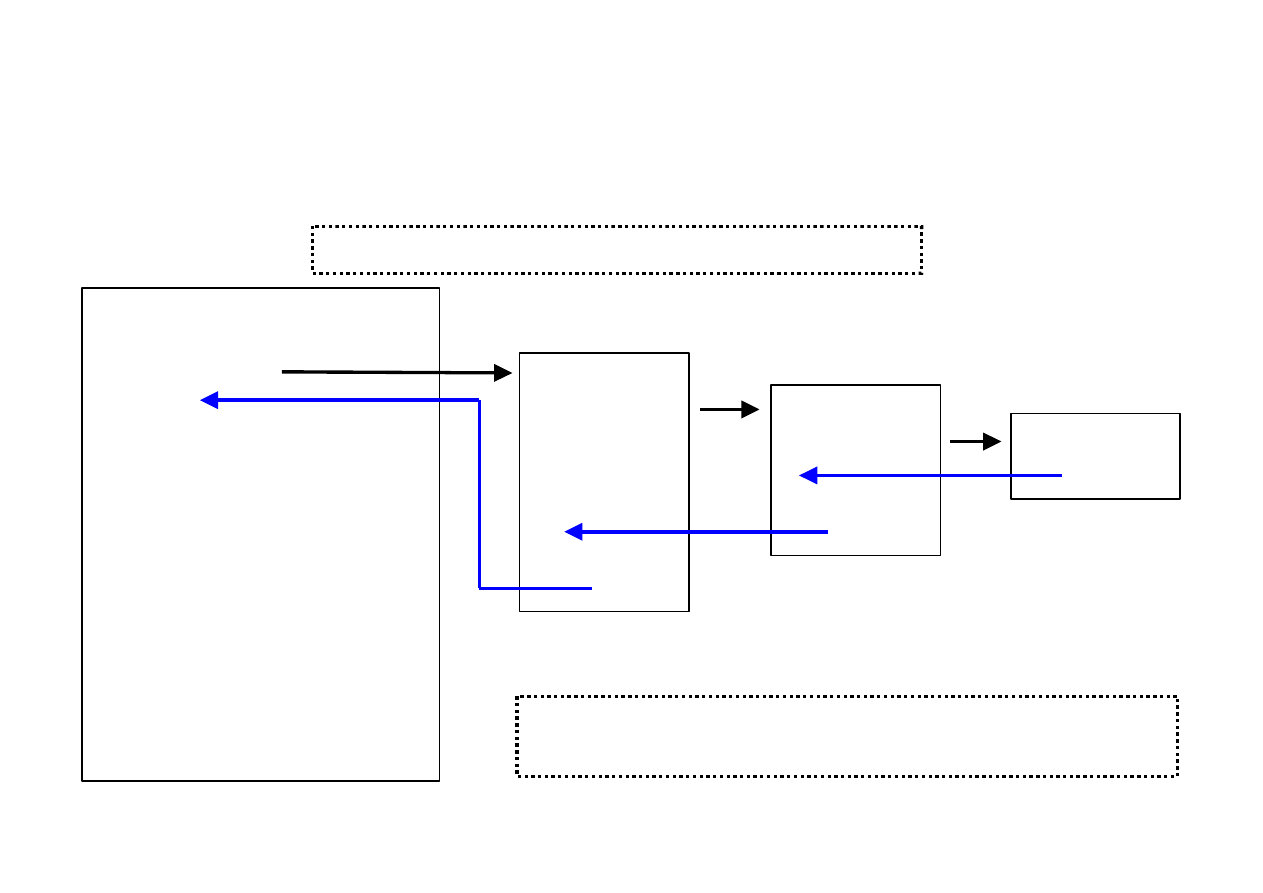
RECURSIVE METHODS (2) -
program c3_1
Print in reverse order characters taken from the keyboard
void main()
{ .....
RevOrder();
.....
}
void RevOrder( void )
{
char c;
if ( (c=getchar()) != '\n' )
{
RevOrder();
printf( "%c", c);
}
}
c
← „a”;
RevOrder();
print c;
c
← „b”;
RevOrder();
print c;
c
← „\n”;
ASSUMPTION: „ab [ENTER]” from keyboard
c is a local variable of each function call,
that has different value each time
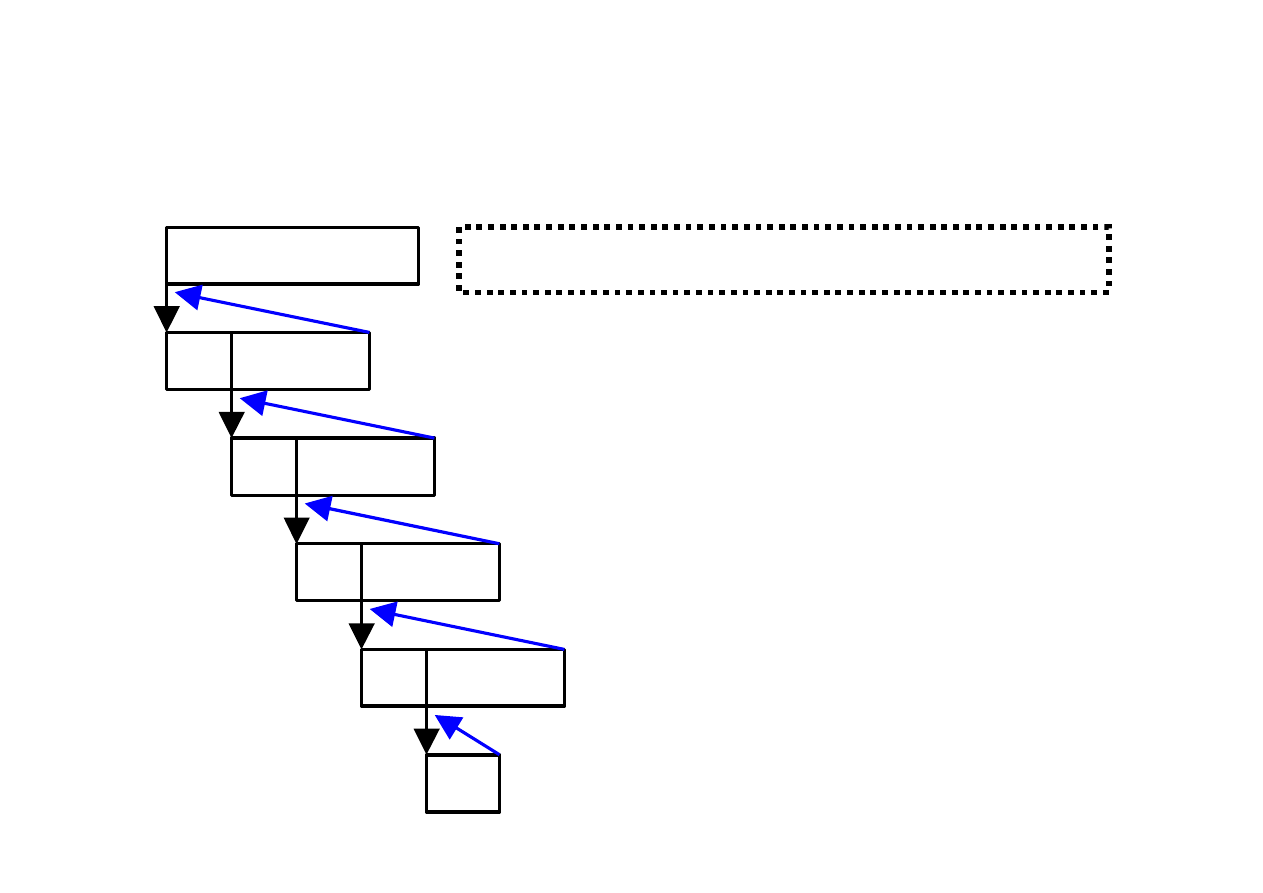
RECURSIVE METHODS (3) -
program c3_1
Print in reverse order characters taken from the keyboard
Main program
a
printf
b
printf
c
printf
d
printf
\n
ASSUMPTION: „abcd [ENTER]” from keyboard
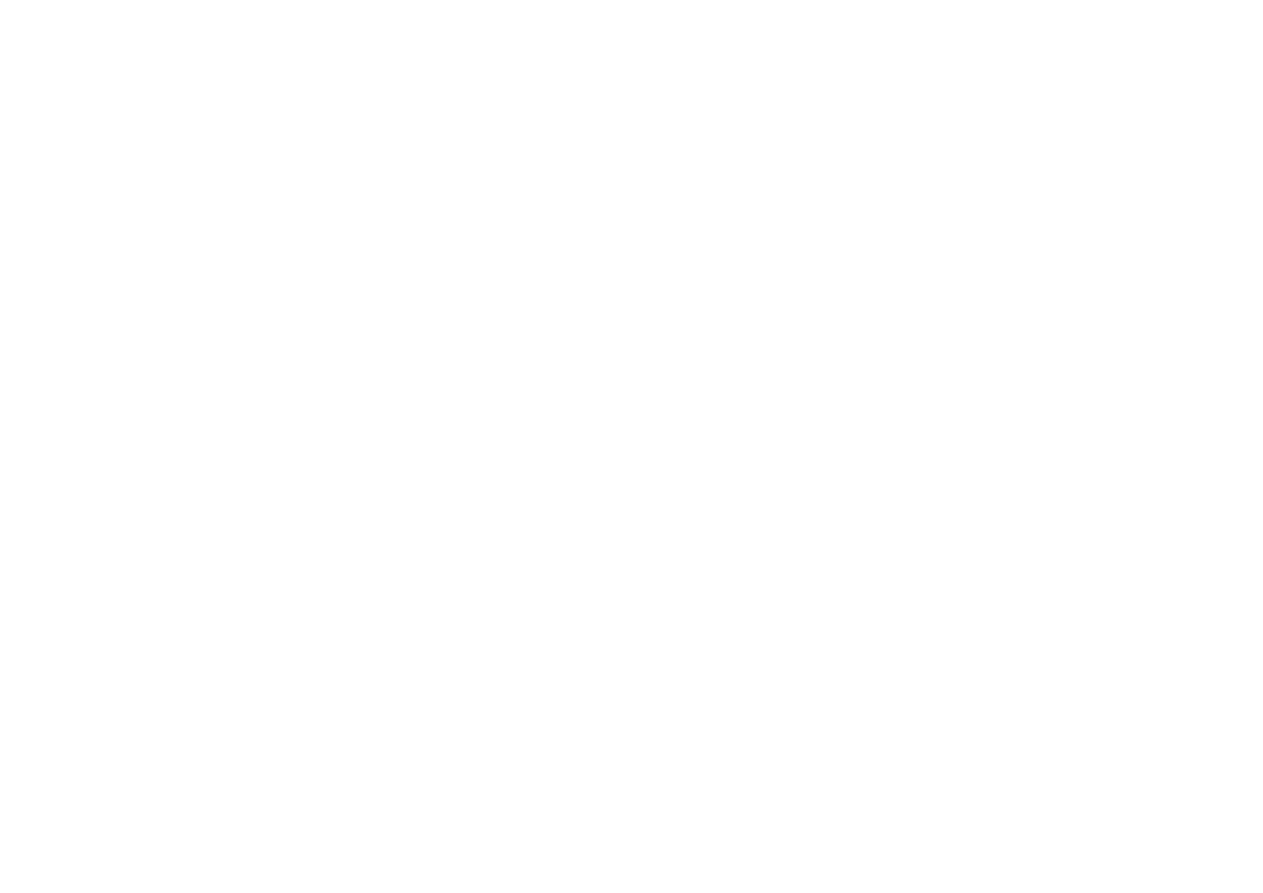
RECURSIVE METHODS (4) -
program c3_2
Change INTEGER to ASCII
/* Example 3.2 - print on the screen value of integer variable
*/
/* i.e. change binary INTEGER value
*/
/* to sequence of ASCII codes of its digits
*/
#include <stdio.h>
#include <math.h>
void int2asc( int n );
/* main program ------------------------------------------------------------------------- */
void main()
{
int x;
printf(" \n What integer value ? ");
scanf("%d", &x);
printf(" \n given = %d \n", x);
printf(" recursion = ");
int2asc( x );
printf("\n");
}
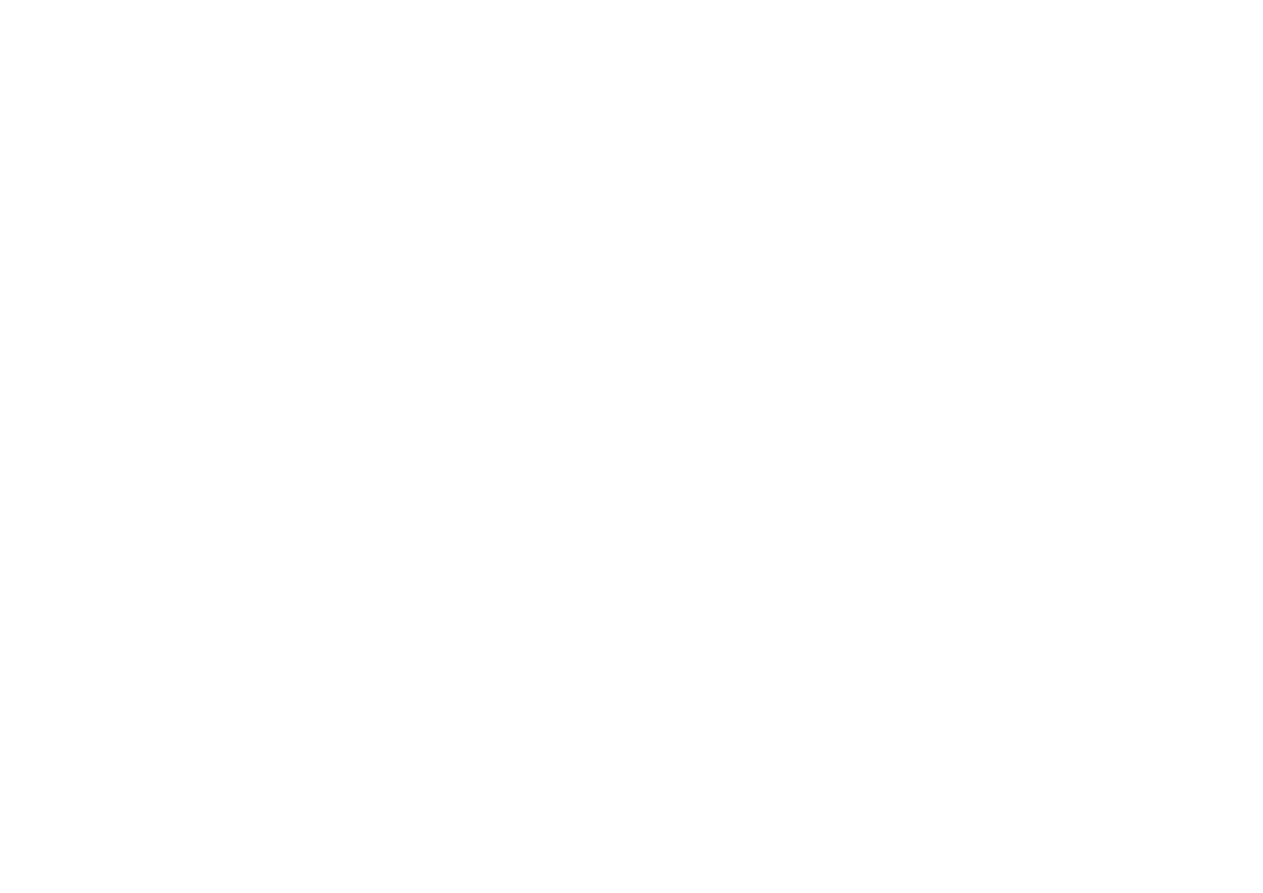
/* Recursive function --------------------------------------------------------------------------------------- */
void int2asc( int n )
{
int i;
//
if
negative
number,
if ( n < 0 ) { putchar('-'); n = -n; }
// then display „-” and negate the number n
if ( (i=n/10) != 0 )
int2asc( i );
// if „i”, i.e. integer part of „n/10”,
//
is
not
equal
zero,
then
call
again
//
but
with
argument
„i”
putchar(‘0’+n%10); //
this (reminder od division n by 10)
// putchar( '0' + (unsigned char) (n - 10 * i) );
// or this (the low significant digit)
}
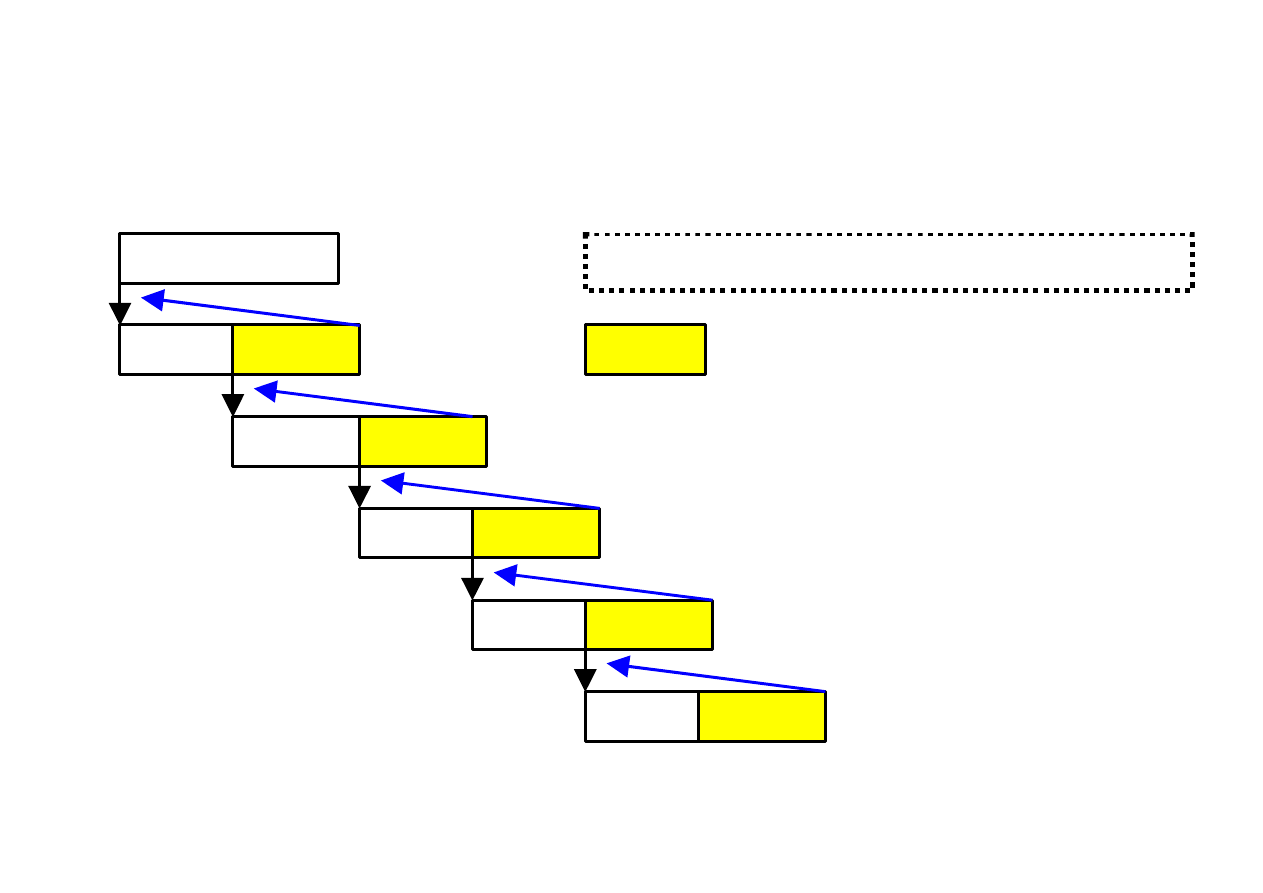
RECURSIVE METHODS (5) -
program c3_2
Change INTEGER to ASCII
Main program
12345
putchar
n=1234
n=123
n=12
n=1
putchar
putchar
putchar
putchar
n
i = n/10
i = n/10
i = n/10
putchar
= putchar(‘0’ + (unsigned char) (n – 10*i)
„1”
„2”
„3”
„4”
„5”
i = n/10
ASSUMPTION: „12345 [ENTER]” from keyboard
print the reminder from division n by 10,
i.e. the low significant digit of n
= putchar(‘0’ + (unsigned char) (n % 10)
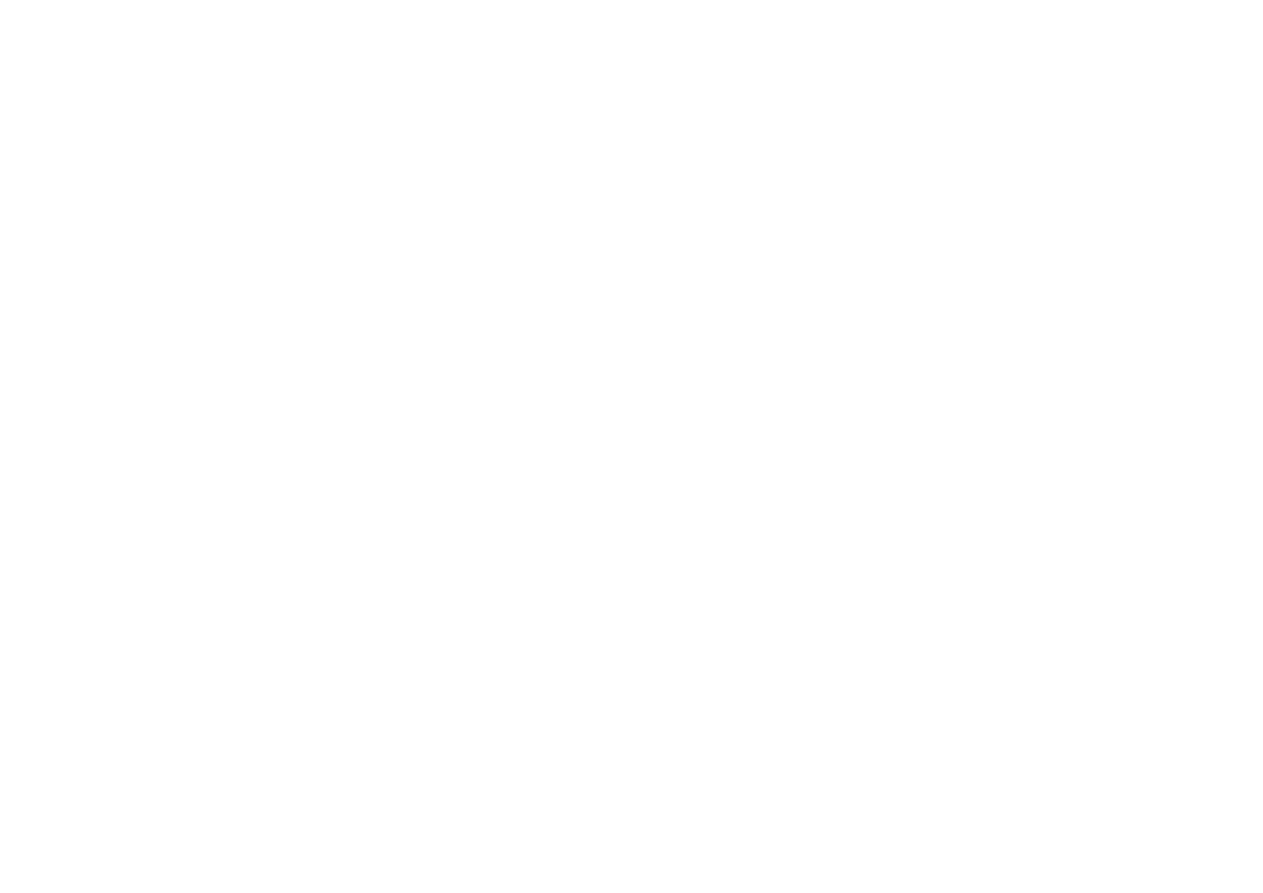
RECURSIVE METHODS (6) -
program c3_3
n! or
n-factorial
/* Example 3.3 – RECURSIVE METHODS – calculate n!
*/
/* n! = 1*2*3*...*(n-1)*n, np. 5! = 1*2*3*4*5
*/
#include <stdio.h>
long nfactorial( long n );
/* main program ------------------------------------------------------------------ */
void main()
{
long n, x, multiplic;
printf("\n I am calculating n! Please, give n ? [max 12] ");
scanf("%ld", &n);
/* Iterative method */
multiplic = 1;
for( x = n; x > 0; x--)
{ multiplic = multiplic * x; }
printf( "\n Iterative method --> n! = %ld \n", multiplic );
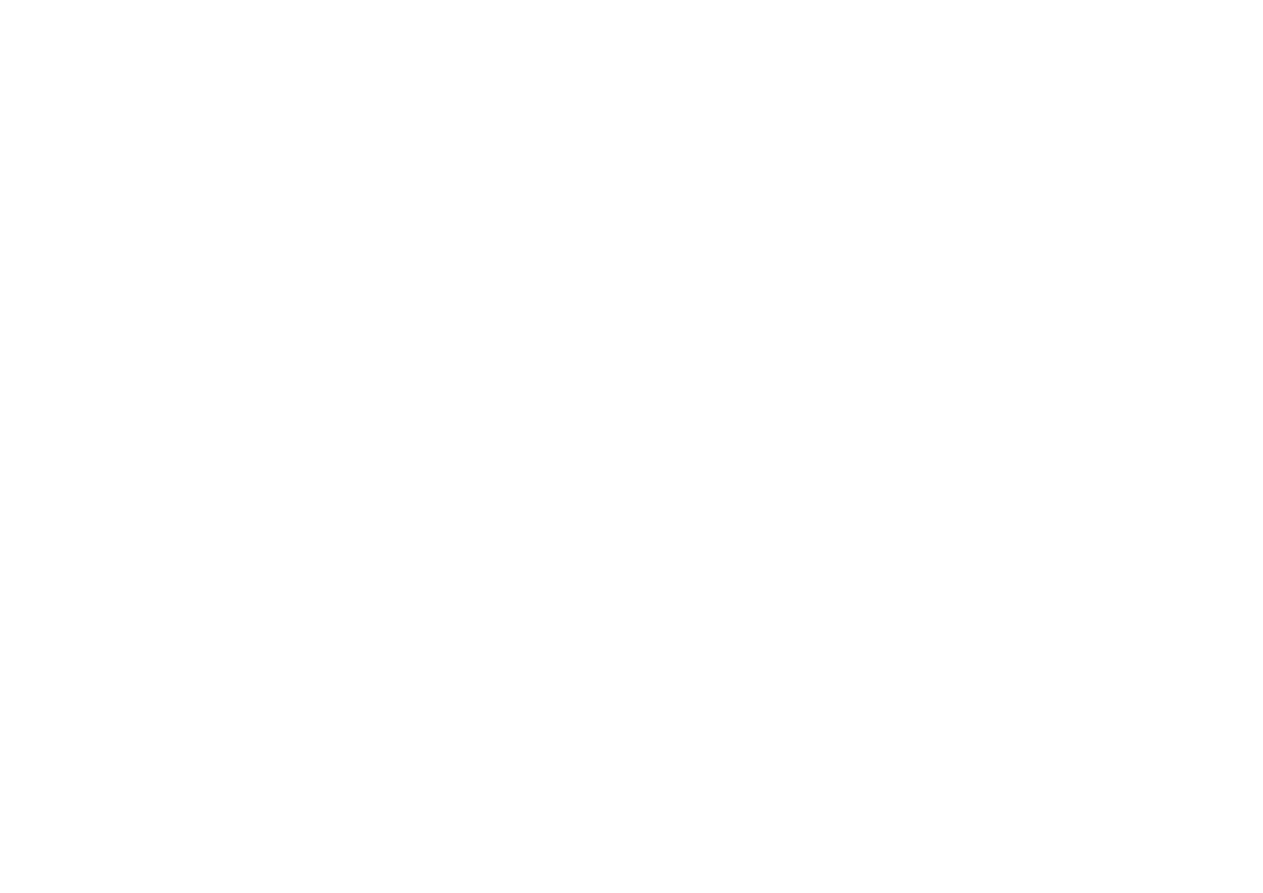
/* Recursive method */
multiplic =
nfactorial( n );
printf( "\n Recursive method --> n! = %ld \n", multiplic);
}
/* Recursive function ----------------------------------------------------------- */
long nfactorial( long n )
{
long x, y;
if( n == 0L ) return(1);
// L means long
x = n-1;
y =
nfactorial(x)
;
/*
recursive
call
*/
return(n*y);
}
long nfactorial( long n )
{
if( n == 0L ) return(1);
return(n*
nfactorial(n-1)
);
/* recursive call */
}
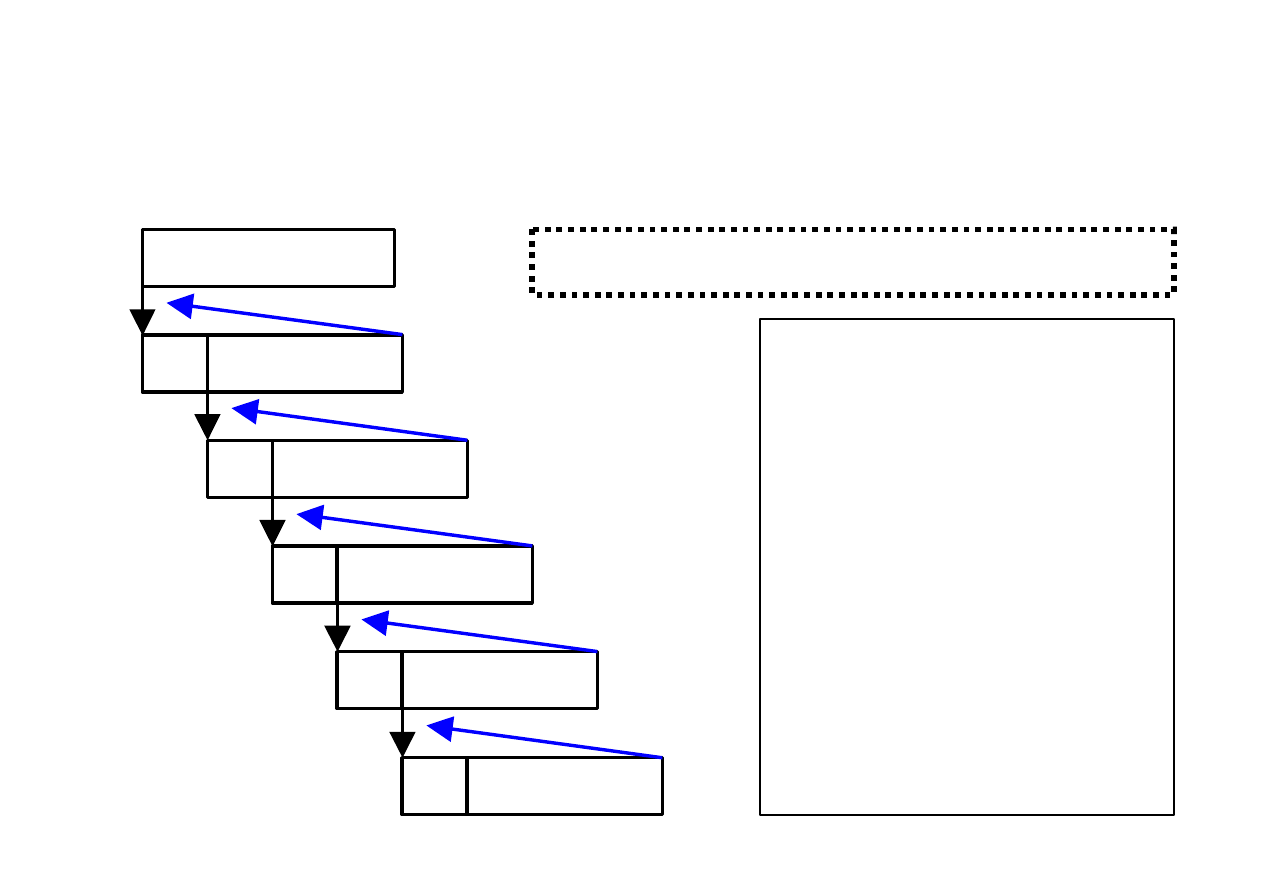
RECURSIVE METHODS (7) -
program c3_3
n! or
n-factorial
Main program
4
4*
(3*2*1*1)
n
3
3*(2*1*1)
2
2*(1*1)
1
1*(1)
0
1
24
6
2
1
1
n-1
n-1
n-1
n-1
ASSUMPTION: „4 [ENTER]” from keyboard
long
nfactorial
( long n )
{
long x, y;
if( n == 0L ) return(1);
x = n-1;
y =
nfactorial
(x);
return(n*y);
}
long
nfactorial
( long n )
{
if( n == 0L ) return(1);
return( n*
nfactorial
(n-1) );
}
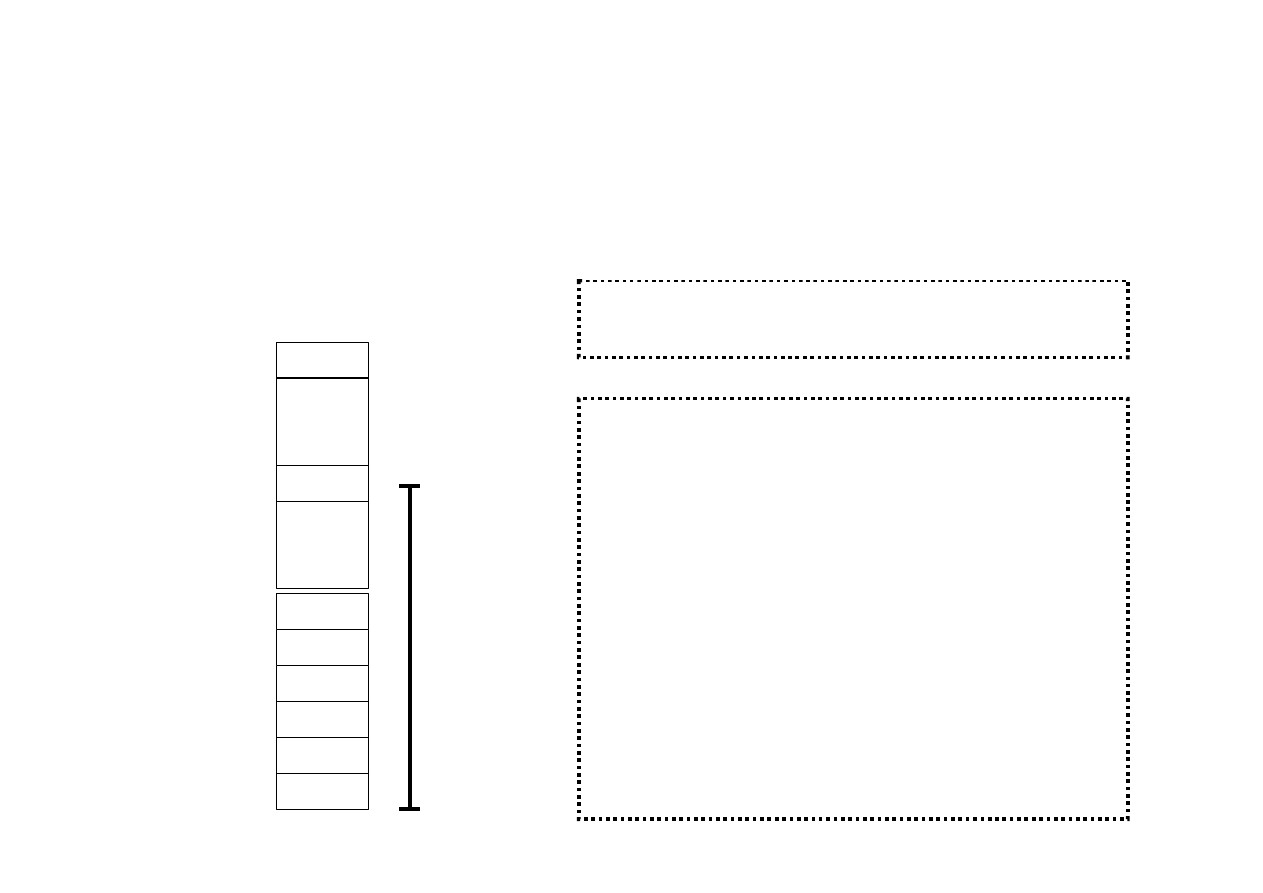
RECURSIVE METHODS (8) -
program c3_5
BINARY SEARCH
- looking for a given value in a table
by its division into two parts
0.0
0.1
0.2
0.3
0.4
0.5
1.5
2.0
•
•
•
table of
divisors
•
•
•
0
1
2
3
4
5
15
N-1
index
i
x = 1.5
TASK: find index ”i” of the table
for which: tab[ i ] == x
SOLUTION 1 (sequential):
i = 0;
while( ( x != tab[i] ) & (i < N-1) )
i++;
SOLUTION 2 (recursive):
int bsearch( int tab[ ], int x, int down, int up )
{ int centre;
centre = (down + up)/2;
if ( x == tab[ centre ] ) return( centre );
if ( x < tab[ centre ] )
return(
bsearch( tab, x, down, centre - 1
)
);
else
return(
bsearch( tab, x, centre + 1, up )
);
}
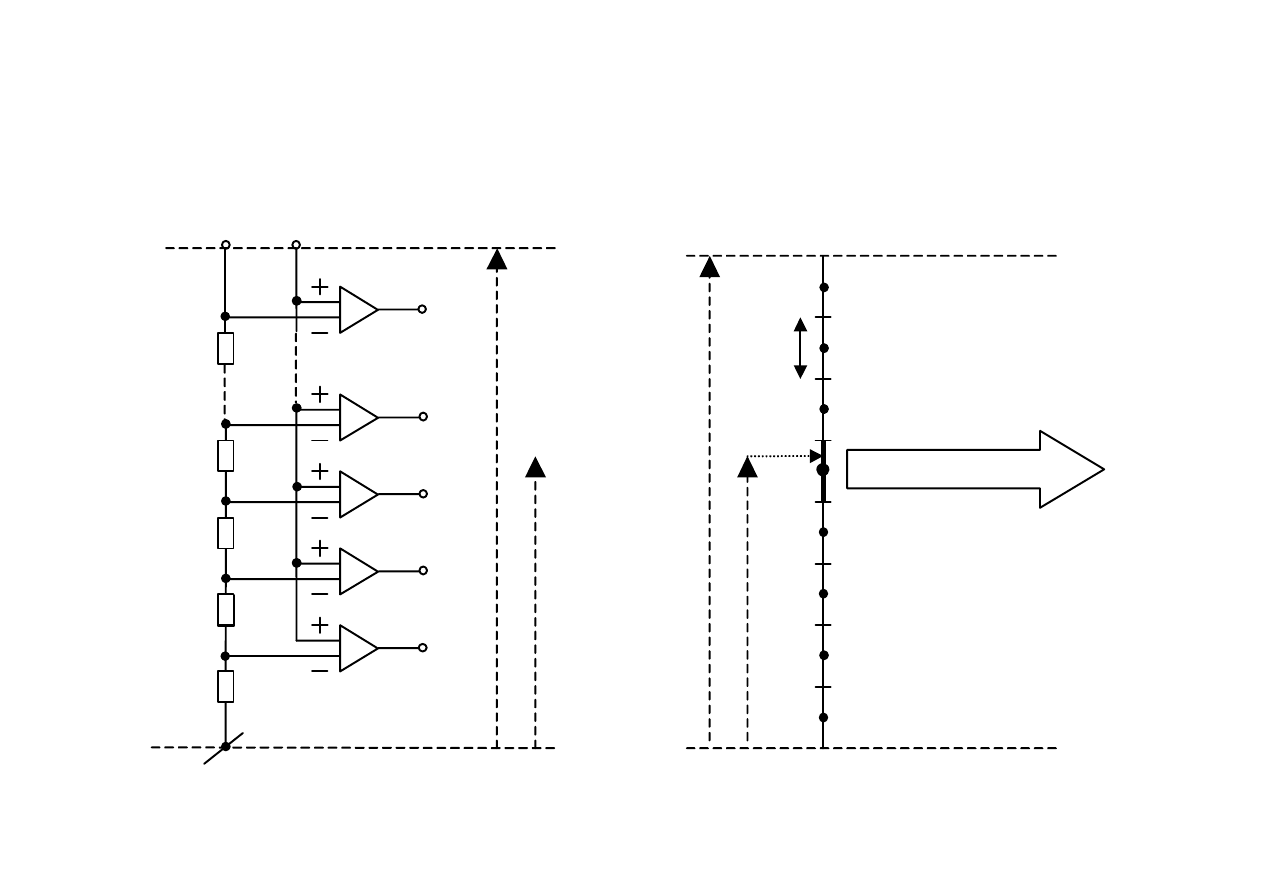
RECURSIVE METHODS (9) -
program c3_5
DIGRESSION: direct Analog-to-Digital (AD) converters
U
range
K
R
R
R
R
R
R
U
x
K
K
K
K
1
1
1
0
0
U
range
U
x
U
range
Nr=0
A/C=000
U
x
0
∆
U
Nr=1
Nr=2
Nr=3
Nr=5
Nr=6
Nr=7
A/C=010
A/C=001
A/C=011
A/C=101
A/C=110
A/C=111
U
0
U
1
U
2
U
3
Nr=4
A/C=100
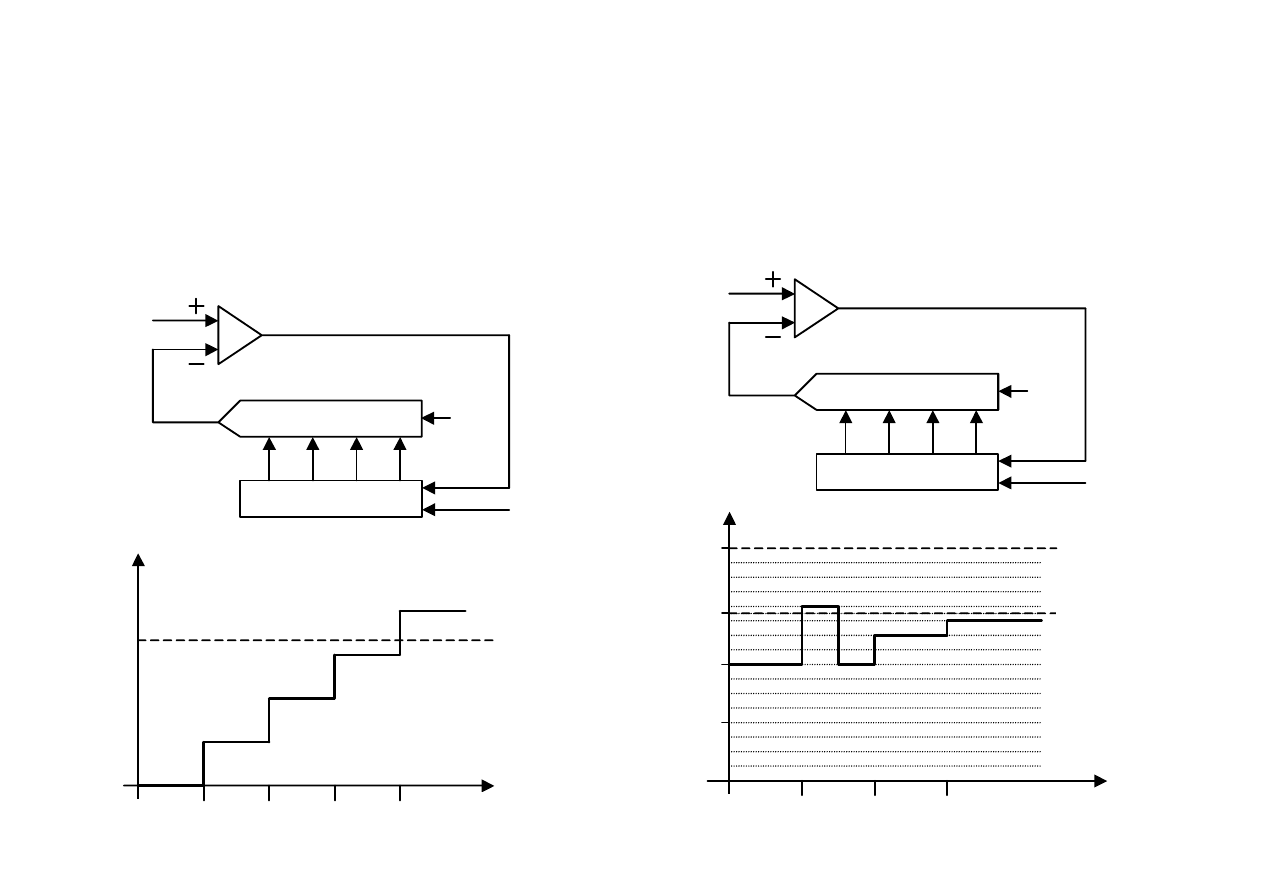
RECURSIVE METHODS (10) -
program c3_5
DIGRESSION: Analog-to-Digital approximation converters:
successive approximation (left) and bit-weighting (right)
U
x
K
0/1
Counter/Generator
D/A
1
1
0
0
Start
Stop
U
counter
U
counter
counter state
U
x
0000
0001
0010
0011
0100
• • •
U
REF
U
x
C
0/1
Logic
D/A
1
1
0
0
Stop
U
D/A
Start
U
C/A
D/A bit number
U
x
0
1
2
3
U
range
3/4U
z
1/2U
z
1/4U
z
U
range
U
REF
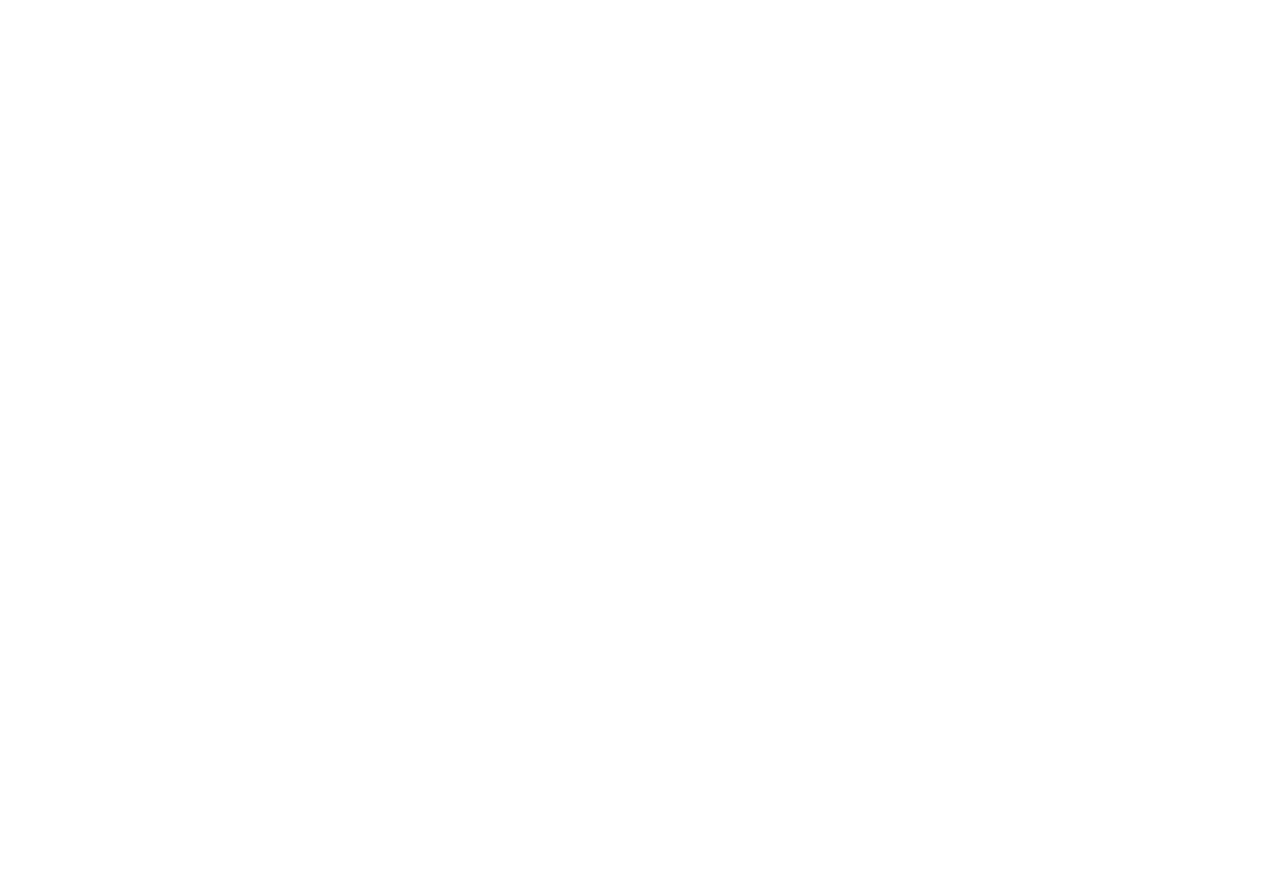
RECURSIVE METHODS (11) -
program c3_5
binary search method
/* Example 3.5 – RECURSIVE METHODS
–
„binary
search" */
/*
INPUT:
tab = [ 0, 1, 2, 3, 4, 5, 6, 7, 8, 9, 10 ]
*/
/*
x = integer number given from the keyboard
*/
/*
OUTPUT:
index of the “x” value in the table tab[]
*/
#include <stdio.h>
int binsearch( int tab[ ], int x, int down, int up );
void main() /* main program ------------------------------------------------------------------------ */
{
int tab[ 11 ] = { 0, 1, 2, 3, 4, 5, 6, 7, 8, 9,10 };
int x, index, down, up;
printf("\n Give a number -x- to be searched ? ");
scanf("%d", &x);
down = 0; up = 10;
index =
binsearch( tab, x, down, up )
;
printf( "\n Index = %i \n", index);
}
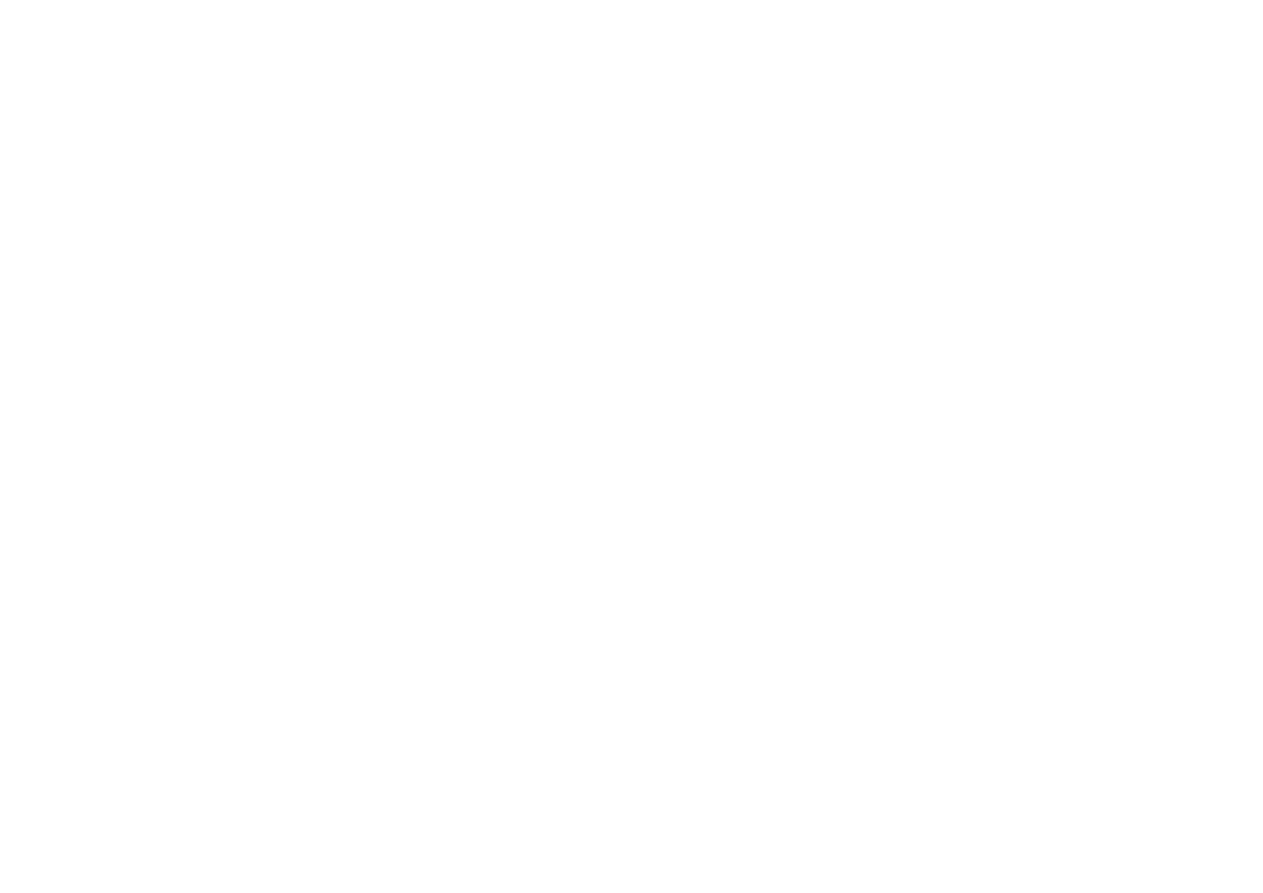
/*
recursive
function -------------------------------------------------------------------- */
int binsearch( int tab[ ], int x, int down, int up )
{
int centre;
if ( down > up ) return(-1);
// -1 means lack of x in the file
centre = (down + up)/2;
if ( x == tab[ centre ] ) return( centre );
if ( x < tab[ centre ] )
return(
binsearch( tab, x, down, centre - 1
) );
else
return(
binsearch( tab, x, centre + 1, up )
);
}
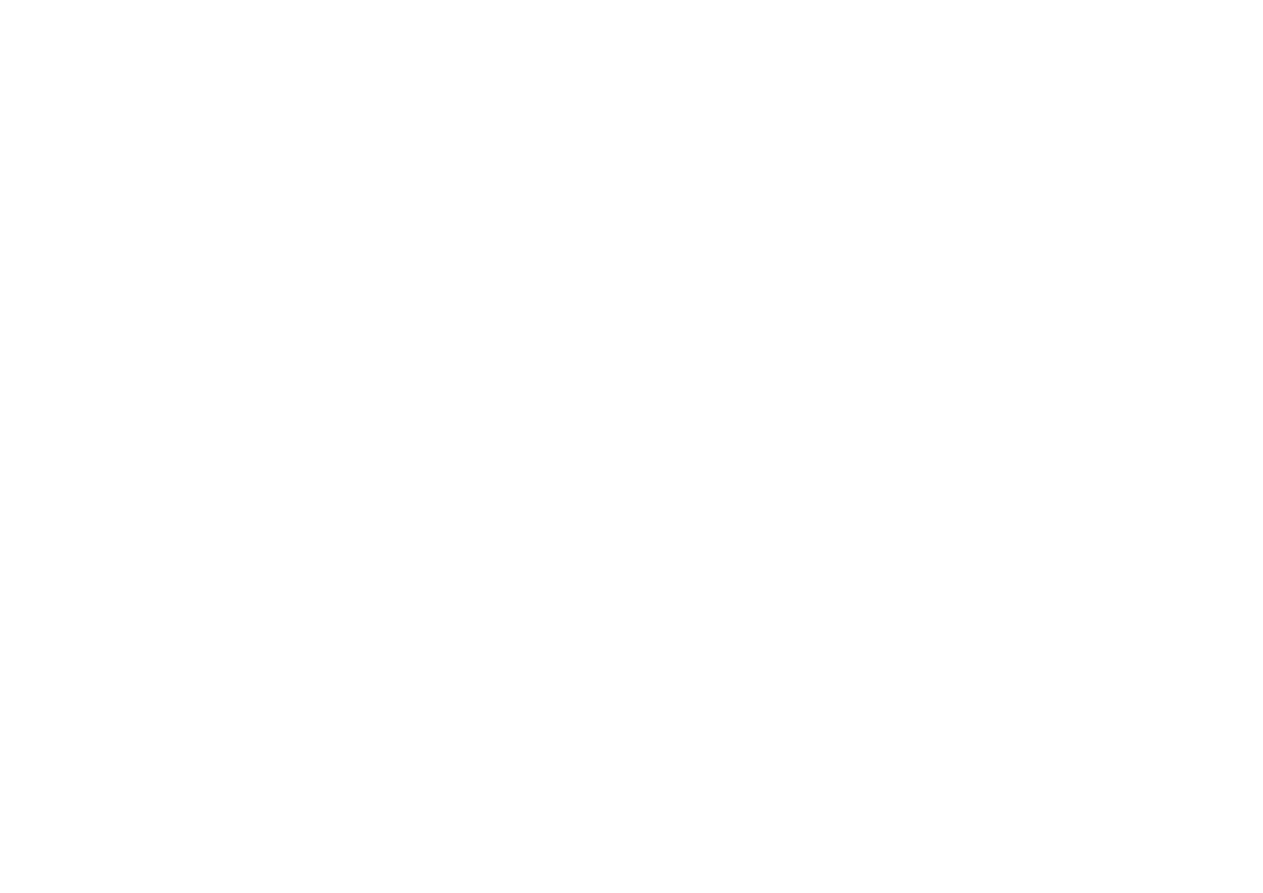
/*
nonrecursive
function --------------------------------------------------------------- */
int
binsearchX
( int tab[], int x, int down, int up)
{
int centre;
while( down <= up )
{
centre = (down + up)/2;
if( x==tab[centre]) return(centre);
if ( x < tab[ centre ] )
up = centre - 1;
else
down = centre+1;
}
return(-1);
}
Wyszukiwarka
Podobne podstrony:
Lecture 08 Recursion
wfhss workshop20090325 lecture01 08 en
Lecture 3 Memory WebCT 08
Contemporary Archtecture lecture series 2007 08
IR Lecture1
uml LECTURE
lecture3 complexity introduction
FP w 08
08 Elektrownie jądrowe obiegi
archkomp 08
02a URAZY CZASZKOWO MÓZGOWE OGÓLNIE 2008 11 08
ankieta 07 08
08 Kości cz Iid 7262 ppt
08 Stany nieustalone w obwodach RLCid 7512 ppt
2009 04 08 POZ 06id 26791 ppt
196 Capital structure Intro lecture 1id 18514 ppt
08 BIOCHEMIA mechanizmy adaptac mikroor ANG 2id 7389 ppt
więcej podobnych podstron